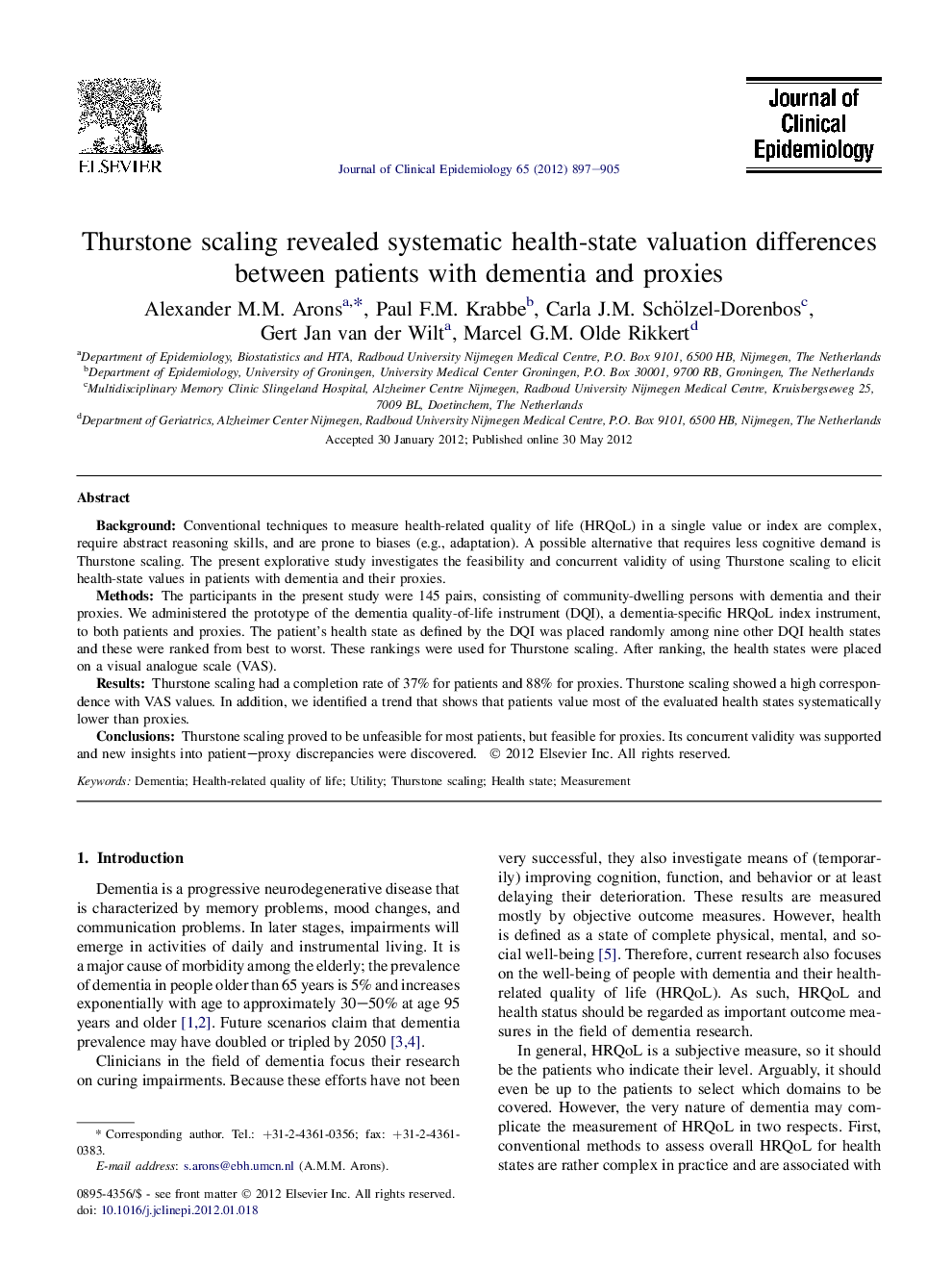| Article ID | Journal | Published Year | Pages | File Type |
|---|---|---|---|---|
| 1082403 | Journal of Clinical Epidemiology | 2012 | 9 Pages |
BackgroundConventional techniques to measure health-related quality of life (HRQoL) in a single value or index are complex, require abstract reasoning skills, and are prone to biases (e.g., adaptation). A possible alternative that requires less cognitive demand is Thurstone scaling. The present explorative study investigates the feasibility and concurrent validity of using Thurstone scaling to elicit health-state values in patients with dementia and their proxies.MethodsThe participants in the present study were 145 pairs, consisting of community-dwelling persons with dementia and their proxies. We administered the prototype of the dementia quality-of-life instrument (DQI), a dementia-specific HRQoL index instrument, to both patients and proxies. The patient's health state as defined by the DQI was placed randomly among nine other DQI health states and these were ranked from best to worst. These rankings were used for Thurstone scaling. After ranking, the health states were placed on a visual analogue scale (VAS).ResultsThurstone scaling had a completion rate of 37% for patients and 88% for proxies. Thurstone scaling showed a high correspondence with VAS values. In addition, we identified a trend that shows that patients value most of the evaluated health states systematically lower than proxies.ConclusionsThurstone scaling proved to be unfeasible for most patients, but feasible for proxies. Its concurrent validity was supported and new insights into patient–proxy discrepancies were discovered.
